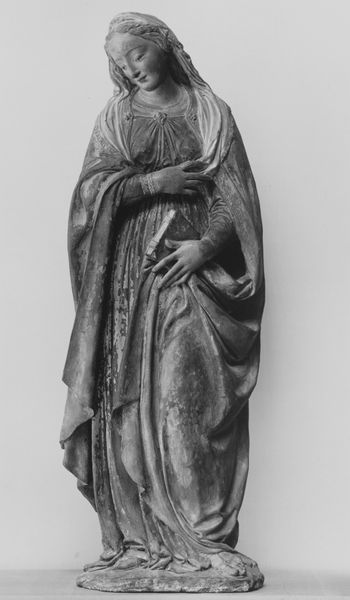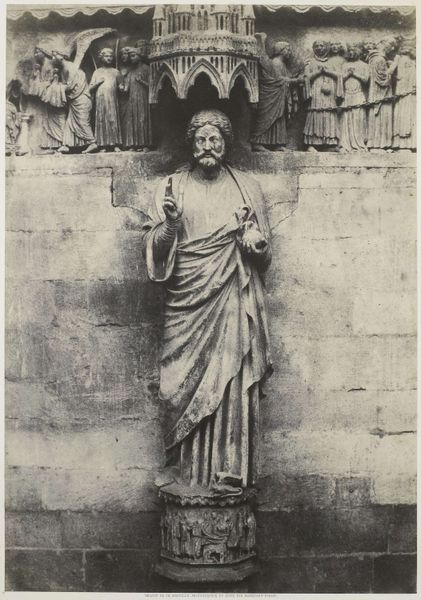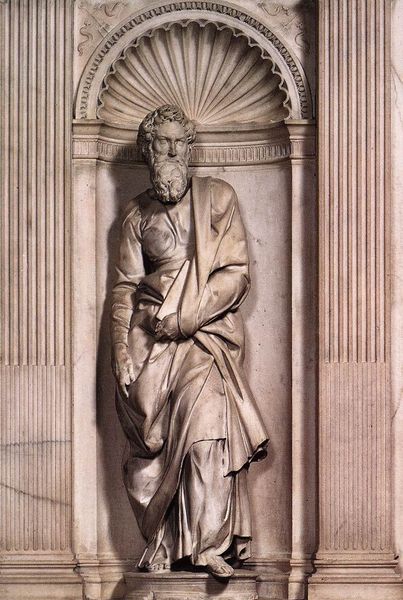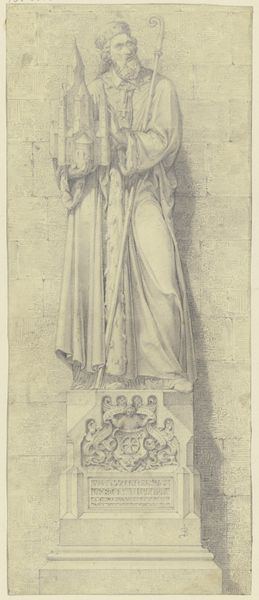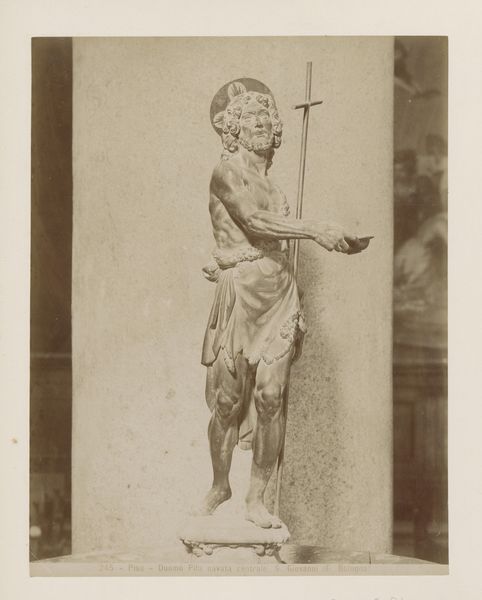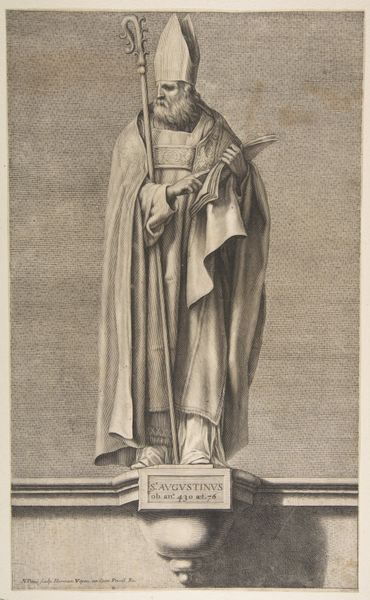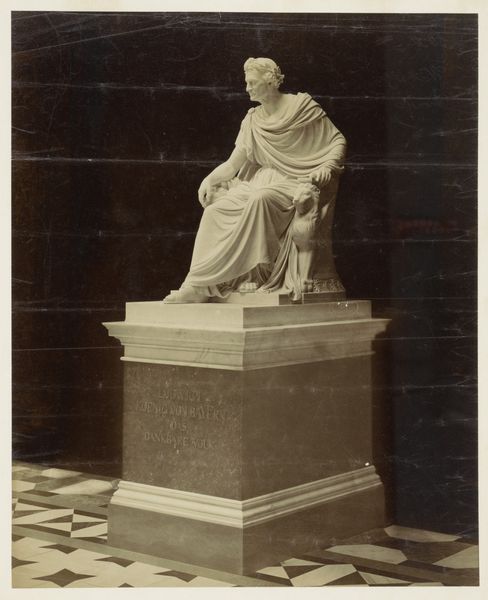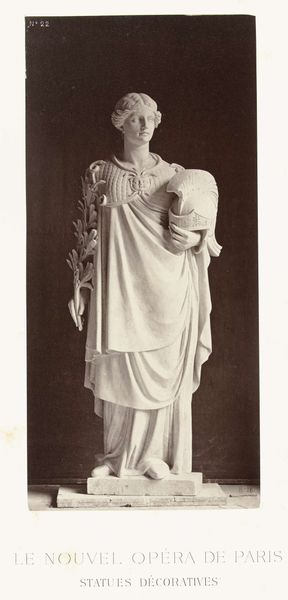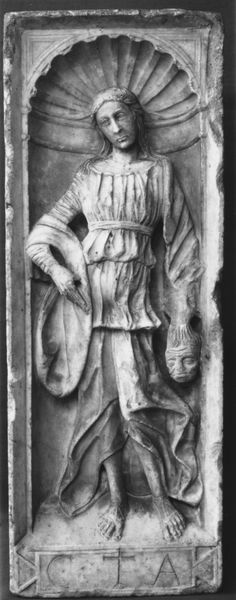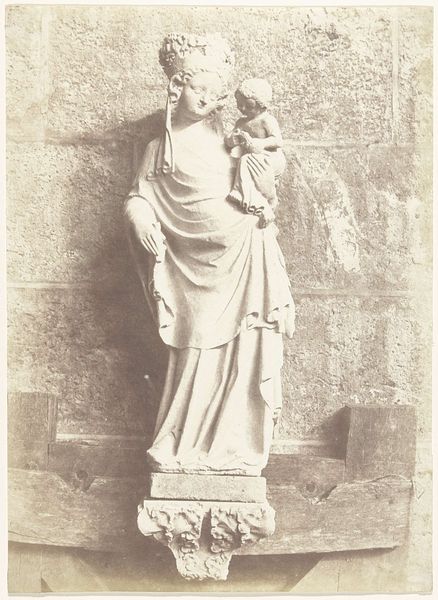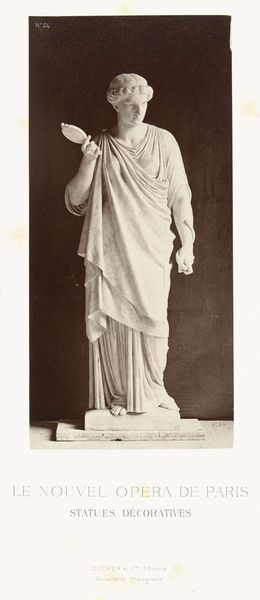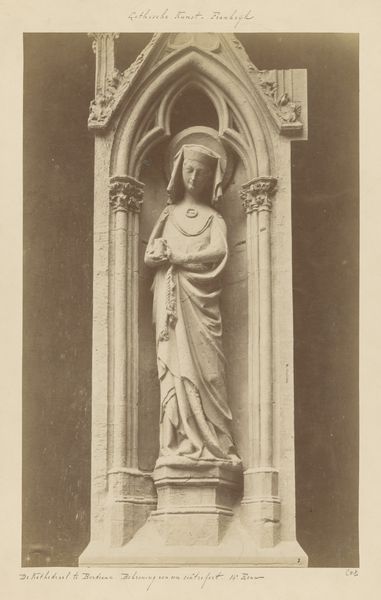
photography, sculpture
#
portrait
#
sculpture
#
photography
#
ancient-mediterranean
#
sculpture
#
19th century
#
statue
Dimensions: image: 35.8 x 18.8 cm (14 1/8 x 7 3/8 in.) mount: 60.5 x 43.5 cm (23 13/16 x 17 1/8 in.)
Copyright: National Gallery of Art: CC0 1.0
Editor: Here we have Charles Marville's 1856 photograph, "Statue of Clovis, Church of Sainte-Clotilde, Paris". The texture captured in this photograph is incredible; you can almost feel the cool stone of the sculpture. How do you see this photograph in terms of its composition? Curator: The formal elements demand attention. Note the vertical thrust created by the statue's pose, the architectural niche, and the pedestal. This linearity is subtly countered by the drapery's soft folds, creating a visual push and pull. The light, raking across the surface, highlights the sculpture's texture and form, articulating depth and volume. How does this interplay contribute to your interpretation? Editor: Well, the contrast makes it really pop. It's like the sculptor is really trying to make sure you can't miss the detail, despite it being part of a larger building. Do you think that idea carries through to how the artist of the photo is thinking, as well? Curator: Precisely. Marville’s choice of lighting directs our focus, underscoring the statue’s inherent qualities. Further, examine the positioning of Clovis within the frame; the careful arrangement amplifies the inherent monumentality of the statue. Do you perceive a dialogue between the photographic medium and sculptural form? Editor: I think so! The photo is kind of flattened, in a way that sculptures, which are three dimensional, are not, but there are definitely many aspects of the form preserved here. I hadn't thought of the way the light contributes to that! What’s been most interesting for me is tracing how the materiality of the original sculpture translates and is transformed through photography. Curator: Indeed, that relationship is paramount. We gain insight into the qualities inherent in each distinct artistic form. The photograph encourages careful, close observation.
Comments
No comments
Be the first to comment and join the conversation on the ultimate creative platform.
